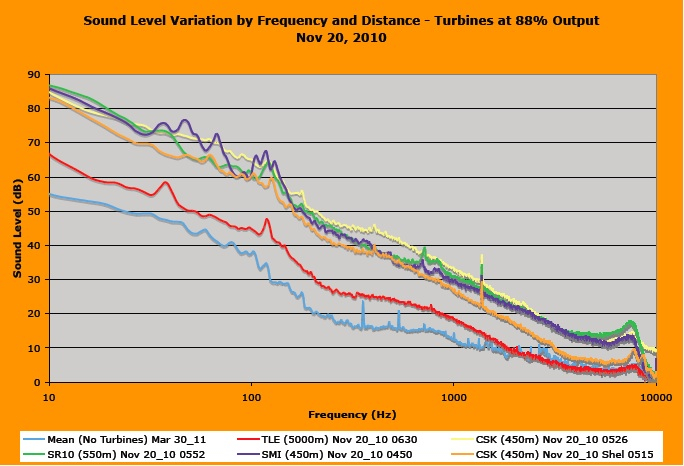
William K.G. (Bill) Palmer
trileaem@bmts.com
TRI-LEA-EM RR 5
Paisley, ON N0G 2N0 Canada
Popular version of paper - 3aNSa2
Presented Wednesday Morning May 25, 2011
161st ASA Meeting, Seattle Wash
The look in their eyes haunted me. Many people have talked to me, face-to-face, and although using different words, said the same thing, "I just cannot stand it anymore, since the wind turbines started operating near my home. Can't you do something, please?" Their eyes told the same story, of hurting, that was not being addressed. There seemed to be little that I could directly do to alleviate the situation. Perhaps, though, I might help those who could take corrective action to understand what might be causing the hurting. As a general rule, when a problem previously undetected occurs, a good place to look for clues is by examining changes. It is well known that wind turbines produce a characteristic sound. Could adding this sound contribute to the hurting? This article documents the investigation.
The project collected digitized audio sound samples at a number of locations, both at "approved locations" (as approved by regulators) as meeting their acceptable criteria, and at "control locations" at distances roughly twice and ten times the minimum approved distances from wind turbines. All test locations are located within about a 10 km (6 mile) radius of a central point, and all are subject to very similar environment, of topography and vegetation. Over 250 test samples have been collected on over 30 occasions, with each sample series collected within a 2 hour period so that weather conditions, wind speeds, and adjacent wind turbines output remained fairly constant. The same calibrated recording equipment was used to collect the data to ensure consistency. A frequency spectrum for each sample was created, separating the sound into its components to help understand its effect.
The collected data reveal:
Analysis of the sound samples also shows that the change is not just an increase in sound level at low frequency. The sound at the "approved locations" shows a very clear cyclical pattern, and periodically the sound pattern shifts to produce an even more pronounced pounding effect.
The changes that are detected do indeed give a clue of significant changes that are occurring at "approved locations" compared to the "control location" as wind turbines come into operation and increase to high power output. Some have suggested that low frequency sound level changes might have health implications, and thus the data suggests that an urgent in-depth analysis of the changes is needed to prevent more hurting, and to address the hurting that is already occurring.
Fig. 1 - Sound Levels with all Turbines Shutdown

Fig. 2 - Sound Levels at Very Low Power - 0%

Fig. 3 - Sound Levels at 88%
